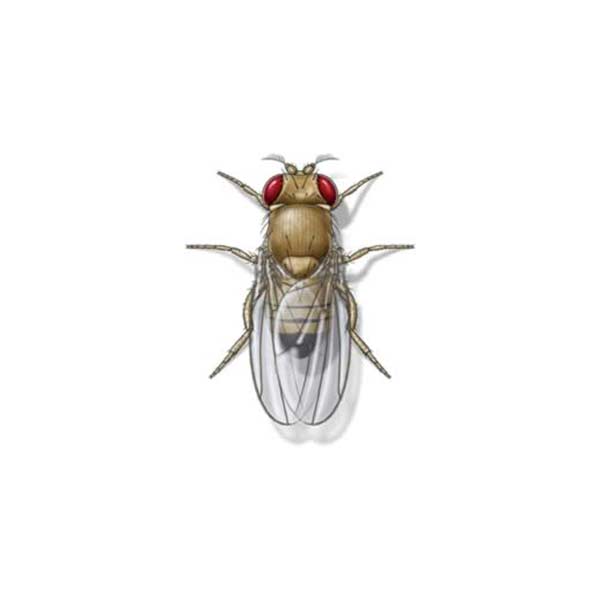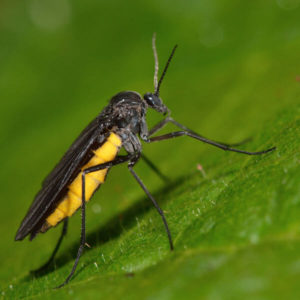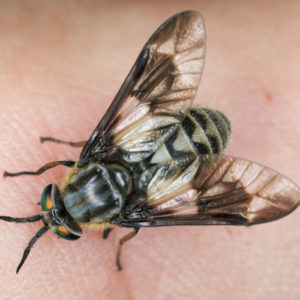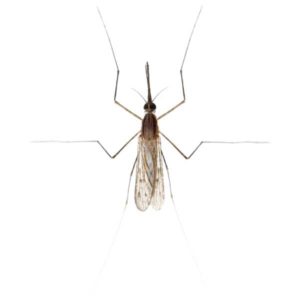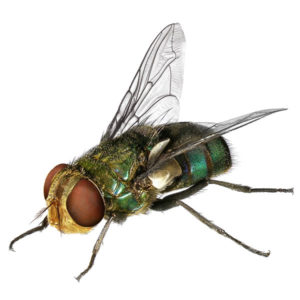Fruit Flies in Suffolk County & Nassau County
Over 177 species of fruit flies occur in North America, north of Mexico, and eight species are believed to be common in the United States. The scientific name, Drosophila, means “lover of dew” probably suggesting these flies require moist environments to reproduce. They are known as fruit, vinegar, or pomace flies and are often confused with other small flies found in structures. Fruit flies are vectors of disease, consuming bacteria and sugar from decaying foods and can often be seen near bowls of fruit, glasses of wine, garbage, and trash cans.
Fruit Fly Habitat
Fruit flies are small flies that can pass through ordinary insect screens and are often found in homes, restaurants, fruit markets, bars, salad bars, and any other place where fruits and vegetables are found. They will often enter structures from nearby dumpsters, trash receptacles, and damp compost piles where fruits and vegetables have been disposed of. Fruit flies lay large numbers of eggs on fruit, and the hatched larvae feed on the fruit. Fruit flies are active during periods of warm weather; single generations may develop in less than a week when temperatures are between 80° and 89°F.
Fruit Fly Behaviors, Threats, or Dangers
Unlike some insects, fruit flies do not sting or bite. They are primarily nuisance pests, however, results of a recent study showed that fruit flies are capable of transferring E.coli, Salmonella, and Listeria to surfaces and relocating E.coli from a contaminated source to fresh, ready-to-eat food. Although fruit flies spend the majority of their time fermenting foods, they also travel to dishes, flatware, drinking glasses, and even toothbrushes. While you may not consume the contaminated produce itself, when you eat or drink from these objects, you’re exposed to the same bacteria the fruit fly has transported from site to site.
If you are dealing with a fruit fly problem on your property, contact your local fly exterminators.
Need help with Fruit Fly control?
Fruit Fly FAQs
What do fruit flies look like?
Fruit flies are small insects that are typically about 1/8 inch (2-4 mm) in length. They have a tan or light brown color with red eyes. Their bodies are slender and segmented, and they have transparent wings. The antennae are relatively short, and their legs are thin and often appear slightly bristly.
What are the signs of fruit flies?
Signs of fruit flies include tiny flying insects around decaying fruits or vegetables, clusters of small eggs, visible larvae, pupae near breeding sites, a sweet odor, and their presence in kitchen or waste areas.
What damage do fruit flies cause?
Fruit flies themselves don’t cause direct harm or damage to humans or structures. However, they can be a nuisance and pose indirect risks. Here are some potential issues associated with fruit flies:
- Contamination of Food: Fruit flies are attracted to decaying organic matter, and they can contaminate food with bacteria and other microorganisms they carry on their bodies.
- Spoilage of Fruits and Vegetables: Fruit flies lay their eggs on the surface of ripening or decaying fruits and vegetables. The hatched larvae feed on the organic matter, potentially causing spoilage.
- Hygiene Concerns: The presence of fruit flies in kitchens, dining areas, or food storage spaces can be a hygiene concern. Their association with decaying matter may create an unsanitary environment.
- Risk of Disease Spread: While not major disease vectors, fruit flies can pick up pathogens from decaying materials and transfer them to food surfaces, increasing the risk of disease transmission.
- General Nuisance: The constant presence of fruit flies buzzing around can be irritating and unpleasant, especially in living spaces and food preparation areas.
How do you prevent fruit flies?
In addition to putting into place a year-round home pest control program, there are some steps you can take around your home to help control fruit flies:
- Inspect fruits and vegetables for signs of fruit flies before purchasing them from a store or farmers market.
- Get rid of ripe or overripe fruits and vegetables. It is also helpful to store produce in the refrigerator instead of out on counters or tables.
- Place garden areas a distance away from your home and routinely pick up and discard fallen fruits and vegetables.
- Regularly remove trash from your home and wash out trash cans.
- Keep drains and sinks free of food debris.
How do I get rid of fruit flies?
To get rid of fruit flies, eliminate attractants by discarding overripe fruits, use vinegar traps or soapy water bowls to capture them, and maintain a clean environment by regularly cleaning surfaces and disposing of kitchen waste promptly.
For persistent fruit fly infestations, it’s advisable to seek professional pest control services. Professionals can assess the extent of the issue and employ targeted methods for effective and long-lasting eradication, ensuring a pest-free* environment.
Can fruit flies hurt me?
Fruit flies themselves are not known to directly harm humans. They do not bite or sting and are generally considered harmless. However, they can pose indirect risks by contaminating food and surfaces with bacteria and other microorganisms that they carry on their bodies. Additionally, the presence of fruit flies can be a nuisance and may indicate unsanitary conditions. While they are not a significant health threat, it’s important to address and eliminate fruit fly infestations for hygiene reasons.

